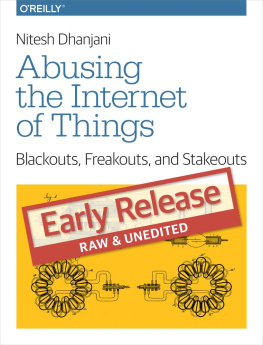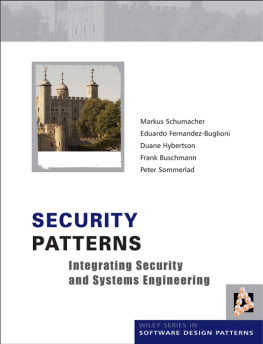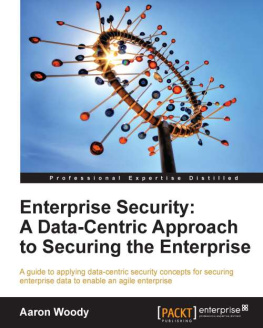This book assumes you are familiar with and can graduate beyond elementary attack and penetration techniques, such as the use of port scanners and network analyzers. A basic understanding of common web application flaws will be an added plus.
Contents of This Book
This book is divided into 10 chapters. Heres a summary of what we cover:
To successfully execute an attack against any given organization, the attacker must first perform reconnaissance to gather as much intelligence about the organization as possible. In this chapter, we look at traditional attack methods as well as how the new generation of attackers is able to leverage new technologies for information gathering.
Not only does the popular perimeter-based approach to security provide little risk reduction today, but it is in fact contributing to an increased attack surface that criminals are using to launch potentially devastating attacks. The impact of the attacks illustrated in this chapter can be extremely devastating to businesses that approach security with a perimeter mindset where the insiders are generally trusted with information that is confidential and critical to the organization.
The protocols that support network communication, which are relied upon for the Internet to work, were not specifically designed with security in mind. In this chapter, we study why these protocols are weak and how attackers have and will continue to exploit them.
The amount of software installed on a modern computer system is staggering. With so many different software packages on a single machine, the complexity of managing the interactions between these software packages becomes increasingly complex. Complexity is the friend of the next-generation hacker. This chapter exposes the techniques used to pit software against software. We present the various blended threats and blended attacks so that you can gain some insight as to how these attacks are executed and the thought process behind blended exploitation.
Cloud computing is seen as the next generation of computing. The benefits, cost savings, and business justifications for moving to a cloud-based environment are compelling. This chapter illustrates how next-generation hackers are positioning themselves to take advantage of and abuse cloud platforms, and includes tangible examples of vulnerabilities we have discovered in todays popular cloud platforms.
Todays workforce is a mobile army, traveling to the customer and making business happen. The explosion of laptops, wireless networks, and powerful cell phones, coupled with the need to get things done, creates a perfect storm for the next-generation attacker. This chapter walks through some scenarios showing how the mobile workforce can be a prime target of attacks.
Phishers are a unique bunch. They are a nuisance to businesses and legal authorities and can cause a significant amount of damage to a persons financial reputation. In this chapter, we infiltrate and uncover this ecosystem so that we can shed some light on and advance our quest toward understanding this popular subset of the new generation of criminals.
The new generation of attackers doesnt want to target only networks, operating systems, and applications. These attackers also want to target the people who have access to the data they want to get a hold of. It is sometimes easier for an attacker to get what she wants by influencing and manipulating a human being than it is to invest a lot of time finding and exploiting a technical vulnerability. In this chapter, we look at the crafty techniques attackers employ to discover information about people to influence them.
When attackers begin to focus their attacks on specific corporate individuals, executives often become the prime target. These are the C Team members of the companyfor instance, chief executive officers, chief financial officers, and chief operating officers. Not only are these executives in higher income brackets than other potential targets, but also the value of the information on their laptops can rival the value of information in the corporations databases. This chapter walks through scenarios an attacker may use to target executives of large corporations.
This chapter presents two scenarios on how a determined hacker can cross- pollinate vulnerabilities from different processes, systems, and applications to compromise businesses and steal confidential data.
In addition to these 10 chapters, the book also includes two appendixes. provides the complete Cache_snoop.pl script, which is designed to aid in exploiting DNS servers that are susceptible to DNS cache snooping.
Conventions Used in This Book








